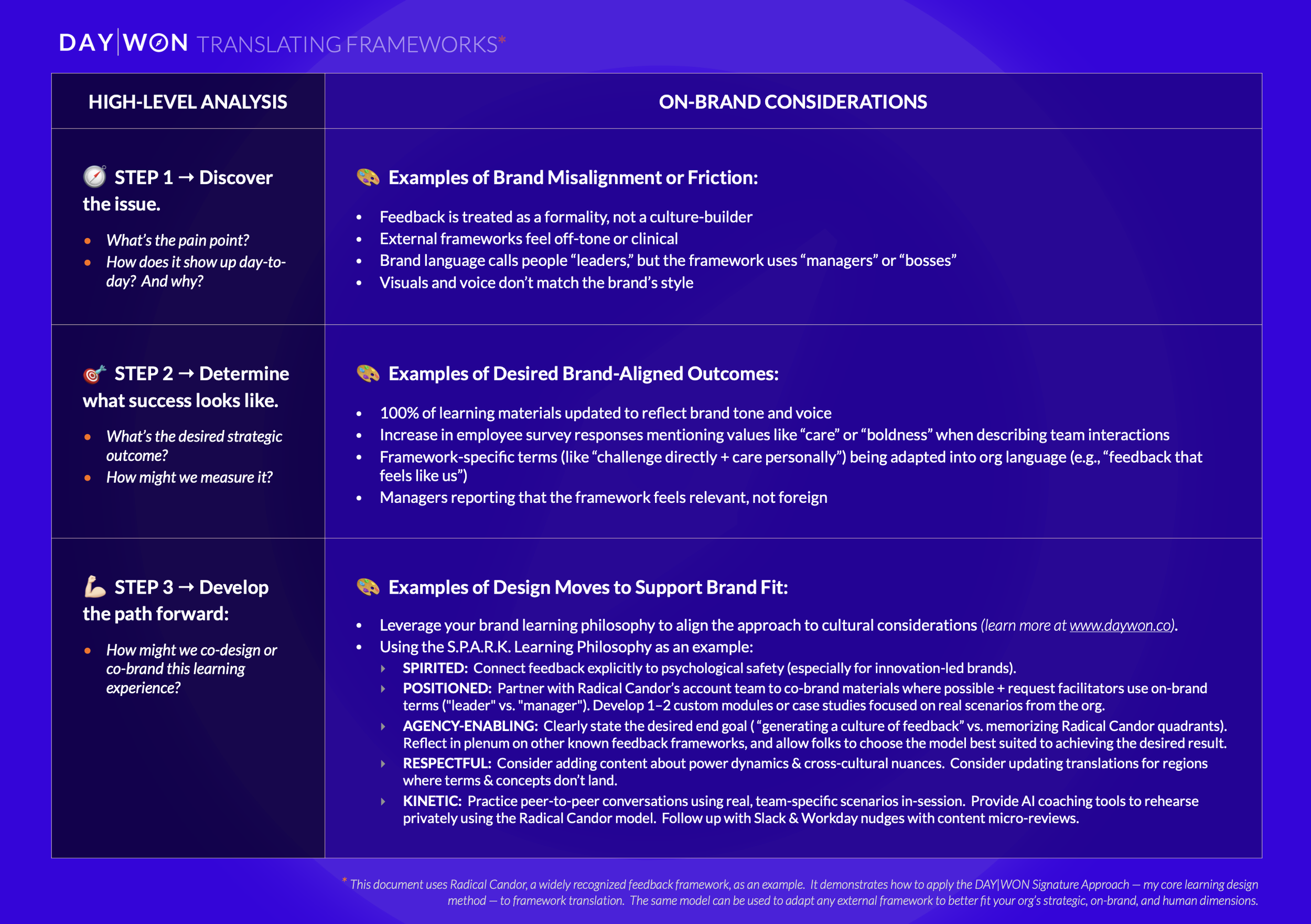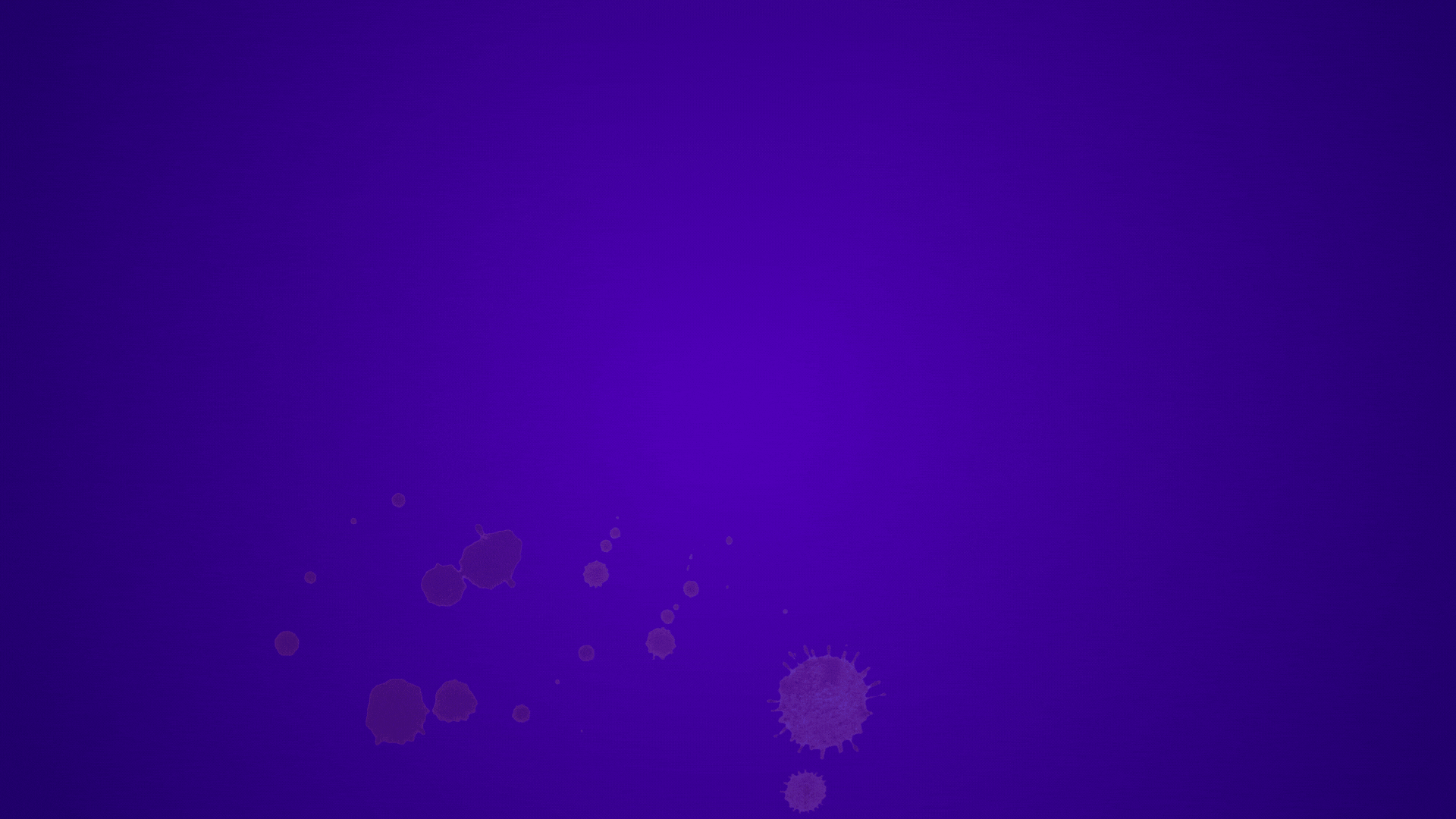the signature brew: Translating Great Ideas Into Learning That Belongs
You've likely seen it before at your company: a big-name framework gets rolled out. Everyone's super excited. And then nothing really seems to change. That's because:
Frameworks don't enable culture shifts. People do.
If learning isn't tied to business outcomes, embedded into people systems, aligned to brand tone, and doesn't feel personal or actionable, it often becomes another well-intended initiative that quickly fades.
This article shares a practical approach for translating external models into something that fits your organization, your people and your goals (yet I find the approach and considerations equally as effective for designing in-house learning experiences as well).
This approach builds on research-backed principles like relevance, behavioral modeling and contextual practice while stripping out the jargon so we're not just living in theory but in practice.
☕️ My Signature Brew
This is the DAY|WON Signature Approach — the way I’ve always instinctively designed learning: people-first, strategically grounded, and built to reflect the brand. At its core is a simple yet powerful model that looks at any learning experience through three lenses:
📊 Strategic Alignment
🎨 Brand Fit
💬 Human Connection
When these three elements are in balance (insert chef’s kiss), learning doesn’t just land — it lasts. I’d argue it also strengthens belonging, alignment + collaboration, as captured in the coffee-circle Venn.
Thoughts about integrating learning frameworks to shift culture.
💡 An Example Framework: Radical Candor
The rest of this article shows how I apply this approach to one common use case: translating external frameworks into your organization in a way that feels like it belongs. For the sake of this article, I'm using Radical Candor to illustrate how this approach works in practice.
“Why use this model?”
It's clear, widely used and comes with solid supplemental resources from the folks at Radical Candor that help teams explore the framework in multiple contexts (learn more about their work at www.radicalcandor.com).
That said, I still recommend exploring what needs to be translated to work inside our respective brands. The goal isn't for our teams to memorize RC's 4-quadrant proprietary language. We want to nurture a culture of feedback: helping people speak up, challenge ideas and support each other in a way that fits our brand, our systems and our people.
🔧 Considerations When Translating Frameworks
When considering the incorporation of any other external model, the goal isn't merely implementation. Ideally it's translation.
That starts with a needs analysis tailored to your org. High-level, this looks like taking the time to:
🧭 STEP 1 → Discover the issue.
• What's the pain point?
• Where are our people feeling friction — in projects, in communication, in team dynamics?
🛠 Start here. Not with what the business wants to change but with what our teams are living. Most learning requests start with a KPI. Yet if we don't know the context around where and why the friction is happening, we're probably guessing at the fix.
🎯 STEP 2 → Determine what success looks like.
Once you name and align on outcomes, tie them to metrics that show progress.
• What's the desired strategic outcome?
• What is the business trying to shift, and how can we measure it?
💪 STEP 3 → Develop the path forward.
• What are 2–3 observable behaviors or skills to develop toward this outcome?
• How might we embed components into existing company systems or team rituals?
• How can we co-design or co-brand this learning experience using the framework’s approach?
• How can we help folks see themselves in the learning — even beyond their roles or work?
🛠 Consider mapping behaviors & skills on a 2 x 2 grid estimating “effort” x “impact”
🛠 If a behavior can't live inside a system — onboarding, performance, team rituals, etc. — it likely won't last.





I have free fesource I’m happy to share that can walk you through these steps. Interested? Send me a note!
⚠️ A Note on Systems + Influence
Not everyone owns performance reviews or reports to the Chief People Officer.
If that's you: Start where you have influence. For example, how might we:
Suggest a retrospective prompt using RC's framework language?
Share a Radical Candor podcast or blog post?
Link to a one-pager with RC-inspired coaching questions for your team?
Offer a reflection at the next all-hands using the RC lens?
This work doesn't always start at the top.
Honestly, it can sometimes be more effective when it starts with the folks already shaping day-to-day culture.
🙋 Addressing Common Pushbacks
"Isn't this too customized?”
→ Not necessarily. Translating doesn't mean rebuilding. It might just mean tweaking the language, swapping a few slides, or building a quick internal case study to make the framework feel like it belongs. The point is to make people feel like it's ours — not someone else's.
"We don't have time to change the system.”
→ Fair. And: we can always start small. Embed 1–2 behaviors into existing rituals. Find one senior early adopter who'll model the approach and speak to the value. Sometimes a slight shift in how a leader gives feedback or opens a retro can have an outsized impact.
Don't let perfect block progress.
🏁 Final Wrap-Up
Frameworks don't enable culture shifts. People do.
And people don't change just because they learn something. They change when they feel it, see themselves in it + believe it's worth the effort.
Introducing a new learning initiative OR translating a popular model like Radical Candor into our organizations starts with understanding what's needed, what fits, and where people can grow. After that, it lives or dies by how well we align it to strategy, culture and daily experience.
Frameworks or beyond, this is the approach I use at DAY|WON: shaping learning experiences that feel real, human, and built for your team.
Curious how this approach could work within your brand culture?

